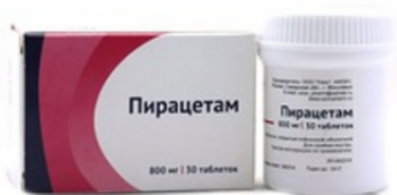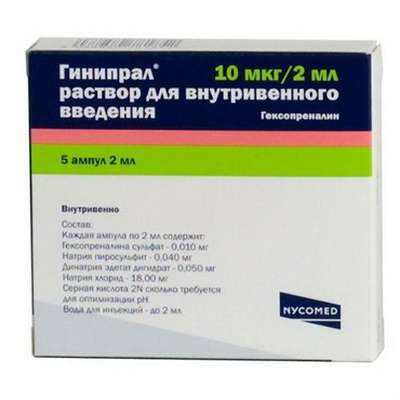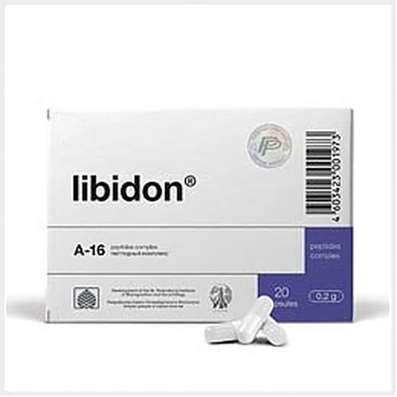Instruction for use: Meloxicam (Meloxicamum)
I want this, give me price
Pharmacological group
NSAIDs – Oxycams
Nosological classification (ICD-10)
M06.9 Other specified rheumatoid arthritis
Rheumatoid arthritis,Pain syndrome in rheumatic diseases, Pain in rheumatoid arthritis, Inflammation in rheumatoid arthritis, Degenerative forms of rheumatoid arthritis, Children's rheumatoid arthritis, Exacerbation of rheumatoid arthritis, Acute articular rheumatism, Rheumatic arthritis, Rheumatic polyarthritis, Rheumatoid arthritis, Rheumatic polyarthritis, Rheumatoid arthritis, Rheumatoid arthritis of active course, Rheumatoid arthritis, Rheumatoid polyarthritis, Acute rheumatoid arthritis, Acute rheumatism
M13.0 Unspecified polyarthritis
Polyarthritis, Inflammatory diseases of joints, Nonspecific polyarthritis, Exchange polyarthritis, Polyarthritis, Polyarthropathy, Subchronic polyarthritis, Chronic polyarthritis, Pain with osteoarthritis, Polyarthritis of unclear etiology
M13.9 Arthritis, unspecified
Arthritis,Purulent arthritis (non-infectious), acute Arthritis,Pain in acute inflammatory diseases of the musculoskeletal system,Pain in chronic inflammatory diseases of the musculoskeletal system,The pain in osteoarthritis, Inflammation in osteoarthritis, Inflammatory arthropathy, Inflammatory and degenerative joint diseases, Inflammatory disease of the musculoskeletal system, Inflammatory joint disease, Inflammatory diseases of the musculoskeletal system, destructive arthritis, The disease of the musculoskeletal system, Diseases of the musculoskeletal system, Diseases of the musculoskeletal system and connective tissue, Infections musculoskeletal system, monoartrit, Non-infectious arthritis, rheumatic arthritis, Osteoarthritis, Acute inflammation of the musculoskeletal tissue, Acute inflammatory diseases of the musculoskeletal system, Acute inflammatory condition of the musculoskeletal system, Acute arthritis, Acute osteoarthritis, Post-traumatic osteoarthritis, Reactive arthritis, Chronic inflammatory diseases of the joints, Chronic arthritis, Chronic inflammatory arthritis, Chronic inflammation of the inner layer of the joint capsule, Chronic inflammation of the joint capsule,Chronic inflammatory disease of the joints, Exudative arthritis
M19.9 Arthrosis, unspecified
Change in brush with osteoarthritis, Osteoarthritis, Osteoarthrosis, Arthrosis of large joints, Pain syndrome in osteoarthritis, Pain syndrome in acute inflammatory diseases of the musculoskeletal system, Pain syndrome in chronic inflammatory diseases of the musculoskeletal system, Deforming arthrosis, Deforming osteoarthritis, Deforming osteoarthritis of joints, Osteoarthritis in the acute stage, Osteoarthritis of large joints, Acute pain syndrome with osteoarthritis, Post-traumatic osteoarthritis, Rheumatic osteoarthritis, Spondylarthrosis, Chronic osteoarthritis
M25.5 Pain in the joint
Arthralgia, Pain syndrome in musculo-articular diseases, Pain syndrome in osteoarthritis, Pain syndrome in osteoarthritis, Pain syndrome in acute inflammatory diseases of the musculoskeletal system, Pain syndrome in chronic inflammatory diseases of the musculoskeletal system, Pain in the joints, Soreness of the joints, Soreness of joints in severe physical exertion, Painful inflammatory joint damage, Painful conditions of the musculoskeletal system, Painful joint conditions, Painful traumatic affection of joints, Pain in the musculoskeletal system, Pain in Shoulder Joints, Pain in the joints, Joint pain, Joint pain with injuries, Musculoskeletal pain, Pain with osteoarthritis, Pain in the pathology of the joints, Pain in rheumatoid arthritis, Pain in chronic degenerative bone diseases, Pain in chronic degenerative joint diseases, Bone-joint pain, Joint pain, Arthritic pain of rheumatic origin, Articular pain syndrome, Joint pain, Rheumatic pain, Rheumatic pains
M45 Ankylosing spondylitis
Ankylosing spondylarthrosis, Marie-Strumpel disease, Ankylosing spondylitis, Pain syndrome in acute inflammatory diseases of the musculoskeletal system, Pain syndrome in chronic inflammatory diseases of the musculoskeletal system, Bechterew's disease, Ankylosing spondylitis, Diseases of the spinal column, Rheumatic spondylitis, Bechterew-Marie-Strumpel disease
M54.1 Radiculopathy
Acute sciatica, Radiculopathy, Radiculitis, Radiculitis with radicular syndrome, Acute radiculopathy, Pain syndrome with radiculitis, Subacute radiculitis, Radiculitis, Chronic radiculitis, Diseases of the spinal column
M54.9 Dorsalgia, unspecified
Pain syndrome with radiculitis, Pain syndrome in the back,Pain with radiculitis, Degenerative changes in the spine, Degenerative and dystrophic disease of the spine and joints, Degenerative disease of the spine, Osteoarthrosis of the spine, Painful lesions of the spine
Code CAS 71125-38-7
Characteristics of Meloxicam
NSAIDs (non-steroidal anti-inflammatory drugs), an oxycam derivative. A light yellow substance, practically insoluble in water, very soluble in strong acids and alkalis, very slightly soluble in methanol. Apparent distribution coefficient (log P) app = 0.1 in n-octanol / buffer pH 7.4. The pKa values of meloxicam are 1.1 and 4.2. Molecular weight 351.41.
Pharmacology
Pharmacological action - anti-inflammatory, antipyretic, analgesic.
Selectively inhibits COX (cyclooxygenase) -2, which regulates the synthesis of PG (prostaglandins) in the inflammatory focus. It significantly reduces the activity of COX-1, which participates in the synthesis of PG, which protects the gastric mucosa and takes part in the regulation of blood flow in the kidneys. When administered in high doses, long-term use and individual characteristics of the organism, selectivity may decrease.
When ingestion is well absorbed from the digestive tract, the absolute bioavailability of meloxicam after a single dose of 30 mg is 89%. Simultaneous food intake does not affect suction. With repeated ingestion in doses of 7.5-15 mg plasma concentrations are proportional to the doses. Tmax is 4-5 hours. The second peak of meloxicam concentration is observed 12-14 hours after administration, which indicates entero-hepatic recirculation. Equilibrium concentrations are achieved within 3-5 days. The binding with plasma proteins (predominantly with albumin) is approximately 99.4%. The value of the protein-bound fraction does not depend on the concentration in the therapeutic dose range. With oral intake of less than 10% meloxicam penetrates into erythrocytes. The volume distribution of meloxicam averaged 10 liters. It penetrates through the histohematological barriers. Concentration in the synovial fluid after a single dose is 40-50% plasma; the amount of free fraction in the synovial fluid is 2.5 times higher than the plasma fraction, which is associated with a lower amount of albumin in the synovial fluid. Almost completely metabolized in the liver with the formation of 4 pharmacologically inactive derivatives. The main metabolite - 5'-carboxymeloxicam (60% of the dose value) is formed by oxidation of the intermediate metabolite - 5'-hydroxymethylmeloxicam, which is also excreted, but to a lesser degree (9% of the dose). In vitro studies have shown that CYP2C9 plays an important role in this metabolic transformation, the CYP3A4 isoenzyme plays an additional role. In the formation of the other two metabolites (which constitute, respectively, 16 and 4% of the dose), peroxidase takes part, the activity of which probably varies individually. It is excreted equally with feces and urine, mainly in the form of metabolites. With feces unchanged, less than 5% of the daily dose is excreted. In urine in unchanged form is found only in trace amounts. T1 / 2 meloxicam is 15-20 hours. Plasma clearance is an average of 8 ml / min, in elderly people the clearance is reduced. With hepatic and renal failure of moderate severity, no significant changes in pharmacokinetic parameters were noted.
Carcinogenicity, mutagenicity, effects on fertility
There was no evidence of a carcinogenic effect of meloxicam in a 104-week study in rats when administered orally at doses up to 0.8 mg / kg / day (approximately 0.4 doses of 15 mg / day for an adult weighing 50 kg in terms of body surface area) and in mice in the study for 99 weeks at oral doses up to 8.0 mg / kg / day (approximately 2.2 doses for humans, as indicated above).
Meloxicam did not show mutagenicity in the Ames test, no clastogenicity was detected in the test for chromosomal aberrations in the culture of human lymphocyte cells and in a micronuclear test on the bone marrow of mice in vivo.
Meloxicam had no effect on fertility in male and female rats at doses up to 9 and 5 mg / kg / day, respectively (4.9 and 2.5 times higher than the human dose, as indicated above). However, an increase in the frequency of embryo-oralism at oral doses> 1 mg / kg / day (more than 0.5 times the human dose) was observed in rats when females received meloxicam for 2 weeks prior to mating and in the early period of embryonic development.
Application of Meloxicam
Inflammatory and degenerative diseases of the joints, accompanied by pain syndrome: arthritis, incl. Rheumatoid arthritis, acute osteoarthritis, chronic polyarthritis; ankylosing spondylitis (Bekhterev's disease), pain syndrome in osteoarthrosis and radiculitis.
Contraindications
Hypersensitivity (including to other NSAIDs), "aspirin" triad (combination of bronchial asthma, recurrent nasal polyposis and paranasal sinuses and intolerance of acetylsalicylic acid and drugs of pyrazolone series), peptic ulcer of stomach and duodenum at the stage of exacerbation; Gastrointestinal, cerebrovascular or other bleeding / hemorrhage; severe heart failure, severe hepatic insufficiency, severe renal failure (if hemodialysis is not performed), age to 15 years.
Restrictions for use
Erosive-ulcerative lesions of the gastrointestinal tract in the anamnesis, patients of advanced age. For rectal administration (in addition): inflammatory diseases of the rectum and anal area, rectal or anal bleeding (including in the anamnesis).
pregnancy and lactation
Teratogenic effects. Meloxicam increased the frequency of defects of the cardiac septum (a rare complication) when using an oral dose of 60 mg / kg / day (64.5 times the dose of 15 mg / day for an adult weighing 50 kg in terms of body surface area) and embryo-oralism at oral doses ≥5 mg / kg / day (5.4 times higher than the human dose as described above) in rabbits receiving meloxicam during organogenesis. Meloxicam did not show teratogenicity in rats at oral doses of 4 mg / kg / day (approximately 2.2 times higher than the dose for humans, as described above) during organogenesis. An increase in the rate of stillbirth was noted in rats at oral doses ≥1 mg / kg / day during organogenesis.
Nonteratogenic effects. Meloxicam caused a decline in such indicators as the birth rate index, live birth, neonatal survival at oral doses ≥0,125 mg / kg / day (approximately 0.07 times the human dose as described above) in rats during pregnancy and lactation.
Meloxicam passes through the placental barrier. Adequate and strictly controlled studies in pregnant women have not been conducted. Use in pregnancy is possible if the expected effect of therapy exceeds the potential risk to the fetus.
Studies on the effect of meloxicam on the closure of the arterial duct in humans have not been carried out. Use of meloxicam in the III trimester of pregnancy should be deleted.
Childbirth and delivery. In studies in rats, it has been shown that meloxicam, like other agents that inhibit GH synthesis, increases the number of stillbirths, causes delay in labor and delivery at oral doses ≥ 1 mg / kg / day (about 0.5 times the dose for a person, as described above) and reduces the number of surviving pups at oral doses of 4 mg / kg / day (approximately 2.1 times the dose for humans as described above) during organogenesis. Similar observations were observed in rats receiving oral doses ≥0,125 mg / kg / day (about 0.07 times the human dose as described above) during pregnancy and lactation.
The effects of meloxicam on childbirth and delivery in humans are unknown.
Action category for fetus by FDA - S.
The use of meloxicam, as well as other drugs that block the synthesis of PG, can affect fertility, so it is not recommended for women who want to become pregnant.
Meloxicam is excreted into the milk of lactating rats, with concentrations in milk exceeding plasma concentrations. It is not known whether meloxicam penetrates into the breast milk of women, so stop breastfeeding for the duration of treatment or avoid the use of meloxicam during breastfeeding.
Side effects of Meloxicam
On the part of the digestive system:> 1% - dyspepsia, nausea, vomiting, abdominal pain, constipation / diarrhea, flatulence; 0.1-1% - stomatitis, transient changes in liver function indicators (increased transaminase or bilirubin levels), belching, esophagitis, gastric and duodenal ulcers, latent or macroscopically visible gastrointestinal bleeding; <0,1% - gastrointestinal perforation, colitis, gastritis.
From the nervous system and sensory organs:> 1% - headache, dizziness; 0,1-1% - vertigo, drowsiness, tinnitus; <1% - conjunctivitis, impaired vision.
From the cardiovascular system and blood (hematopoiesis, hemostasis):> 1% - edema, anemia; 0.1-1% - increased blood pressure, palpitations, flushes to the face, changes in the hemogram, incl. change in the number of individual types of leukocytes, leukopenia, thrombocytopenia.
On the part of the respiratory system: exacerbation of bronchial asthma, cough.
From the genitourinary system: 0.1-1% - changes in renal function (increase in creatinine and / or urea levels); <1% - acute renal failure, interstitial nephritis, glomerulonephritis, renal medullary necrosis, nephrotic syndrome.
From the skin:> 1% - skin rash, itching; 0,1-1% - urticaria; <0.1% - photosensitivity, bullous reactions, erythema multiforme, Stevens-Johnson syndrome, toxic epidermal necrolysis.
Allergic reactions: <0.1% - angioedema, immediate-type hypersensitivity reactions, including anaphylactic and anaphylactoid.
Other: <0.1% - bronchospasm, fever.
Interaction
With simultaneous use with acetylsalicylic acid and other NSAIDs, the risk of erosive and ulcerative lesions and bleeding from the gastrointestinal tract increases. When used simultaneously with antihypertensive drugs, the effectiveness of the latter may be reduced. When used simultaneously with lithium preparations, cumulation of lithium and an increase in its toxic effect are possible (control of the concentration of lithium in the blood is recommended). Simultaneous use with methotrexate increases the side effect of the latter on the hematopoietic system (there is a risk of anemia and leukopenia, periodic monitoring of the general blood test is necessary).
Joint use with diuretics and cyclosporine leads to an increased risk of developing renal failure.
With simultaneous use with intrauterine contraceptives, the effectiveness of the latter may be reduced. With simultaneous use with anticoagulants (heparin, ticlopidine, warfarin), as well as with thrombolytic drugs (streptokinase, fibrinolysin), the risk of bleeding increases (blood coagulability indices should be periodically monitored).
Simultaneous use with colestyramine increases the excretion of meloxicam through the digestive tract (as a result of binding meloxicam).
At simultaneous reception meloxicam with antacids of a pharmacokinetic interaction it is not revealed.
Overdose
Symptoms: increased side effects.
Treatment: gastric lavage, reception of activated charcoal (within the next hour), symptomatic therapy. Kolestyramin accelerates the removal of the drug from the body. Forced diuresis, alkalization of urine, hemodialysis - ineffective due to the high connection of meloxicam with blood proteins. Specific antidotes and antagonists were not detected.
Routes of administration
Inside, in / m, rectally.
Precautions for Meloxicam
With caution apply for diseases of the upper gastrointestinal tract in anamnesis, in combination with anticoagulants, myelotoxic drugs, incl. methotrexate (possible cytopenia).
The occurrence of gastroduodenal ulcers, gastrointestinal bleeding, side effects from the skin and mucous membranes serves as a basis for drug discontinuation. If allergic reactions (itching, skin rash, urticaria, photosensitization) occur during treatment, you need to see a doctor to resolve the issue of stopping the drug.
Risk of gastrointestinal complications. Serious side effects from the gastrointestinal tract, including inflammation, bleeding, ulceration and perforation of the stomach or intestines, may occur at any time using NSAIDs without prognostic symptoms. A higher risk of serious complications from the gastrointestinal tract is in elderly patients, the likelihood of these complications increases also with prolonged use.
Meloxicam, like other NSAIDs, can mask the symptoms of infectious diseases.
The appointment of NSAIDs to patients with reduced renal blood flow and BCC can accelerate kidney decompensation (after the abolition of NSAID therapy, the kidney function is usually restored to its previous level). Especially the risk of developing such reactions in patients with dehydration phenomena, congestive heart failure, cirrhosis, nephrotic syndrome and severe kidney disease, especially in patients receiving diuretics, and also after significant surgical intervention leading to hypovolemia is particularly high (from the beginning of treatment careful monitoring is necessary diuresis and kidney function). In rare cases, NSAIDs can cause interstitial nephritis, glomerulonephritis, necrosis of the renal medulla, or nephrotic syndrome. If there is a significant deviation from the norm of the level of serum transaminases and other indicators characterizing the liver function, it is necessary to stop taking and to conduct control laboratory tests. With care appoint elderly, weakened and emaciated patient.
The use of meloxicam can cause the occurrence of such undesirable effects as headache and dizziness, drowsiness. In this regard, it is necessary to abandon the management of vehicles, maintenance of machinery and mechanisms and other activities requiring increased concentration of attention.

 Cart
Cart





